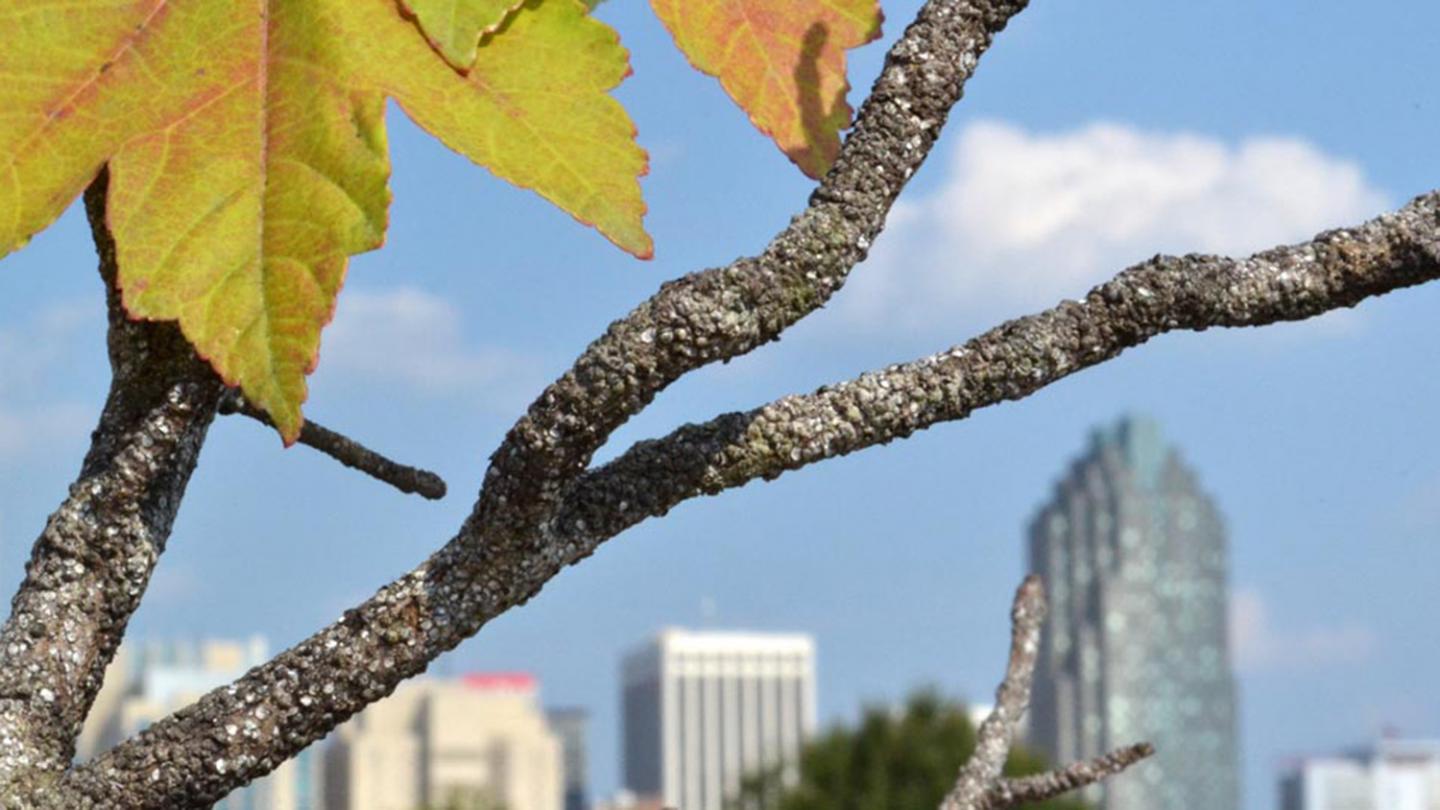
Credit: Adam Dale
A North Carolina State University study examining urbanization, scale-insect abundance and latitudinal warming on tree health in the Southeast captured a few surprising results.
The study showed more scale insects on red maple trees in the midrange of eight cities within a 10-degree latitudinal difference, from Newark, Delaware, to Gainesville, Florida.
Cities in that midrange, including Raleigh and Asheville, showed poorer tree health, due mostly to these high volumes of tree-destroying gloomy scale insects (Melanaspis tenebricosa), which appear as tiny bumps on tree branches and leaves.
“Impervious surfaces – basically concrete and pavement – near trees was a better predictor of scale-insect abundance than temperature, and thus a better predictor of poor tree health in the study area,” said Michael Just, an NC State postdoctoral entomology researcher and corresponding author of a paper describing the research.
The finding was surprising, Just said, as the study’s original hypothesis predicted higher scale-insect abundance at lower latitudes – the study’s southernmost areas.
“What we’ve learned over the years in natural areas like forests didn’t translate in this study, which means we may need to consider if other natural-system theories can be used in urban areas,” Just said. “That’s important if we want to have reliable predictive ecological models.”
###
The study appears in the journal Oikos.
Steven Frank, an NC State professor of entomology, and Lawrence Long, an NC State entomology graduate student, co-authored the paper along with Adam Dale from the University of Florida.
Funding for the study was provided by the U.S. Department of Agriculture National Institute of Food and Agriculture funded Southern IPM Center, under Agreement No. 2014-70006-22485, as well USDA NIFA award Nos. 2013-02476 and 2016-70006-25827. It was also supported by Cooperative Agreement G15AP00153 from the U.S. Geological Survey.
Note: An abstract of the paper follows.
“Urbanization drives unique latitudinal patterns of insect herbivory and tree condition”
Authors: Michael Just, Lawrence Long and Steven Frank, NC State University; Adam Dale, University of Florida
Published: Feb. 15, 2019 in Oikos
DOI: 10.1111/oik.05874
Abstract: Urban landscapes are characterized by high proportions of impervious surface resulting in higher temperatures than adjacent natural landscapes. In some cities, like those at cooler latitudes, trees may benefit from warmer urban temperatures, but trees in many cities are beset with problems like drought stress and increased herbivory. What drives patterns of urban tree health across urbanization and latitudinal temperature gradients? In natural systems, latitude-herbivory relationships are well-studied, and recent temperate studies have shown that herbivory generally increases with decreasing latitudes (warmer temperatures). However, the applicability of this latitude-herbivory theory in already-warmed urban systems is unknown. In this study, we investigated how the interaction of urbanization, latitudinal warming, and scale insect abundance affected urban tree health. We predicted that trees in warmer, lower latitude cities would be in poorer health at lower levels of urbanization than trees at cooler, higher latitudes due to the interaction of urbanization, latitudinal temperature, and herbivory. To evaluate our predictions, we surveyed the abundance of scale insect herbivores on a single, common tree species Acer rubrum in eight US cities spanning 10° of latitude. We estimated urbanization at two extents, a local one that accounted for the direct effects on an individual tree, and a larger one that captured the surrounding urban landscape. We found that urban tree health did not vary with latitudinal temperature but was best predicted by local urbanization and herbivore abundance. We did not observe increased herbivore abundance in warmer, lower latitudes cities, but instead herbivore abundance peaked in the mid latitudes of our study. This study demonstrates that urban landscapes may deviate from classical theory developed in natural systems and reinforces the need for research reconciling ecological patterns in urban landscapes.
Media Contact
Michael Just
[email protected]
Original Source
https:/
Related Journal Article
http://dx.




